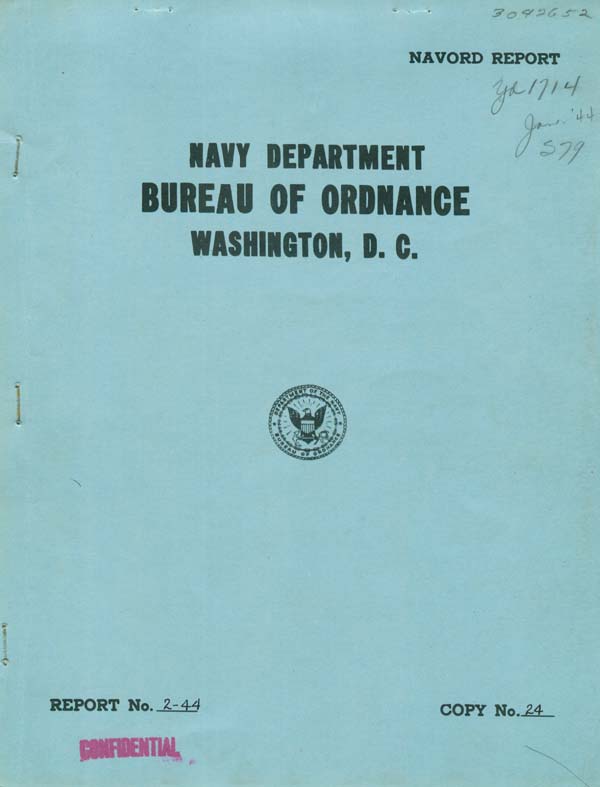
If you can see this text here you should update to a newer web browser
Normal | Highlight & Comment Highlighted Text will be in Yellow, but there are none yet
|

|
|
DEVELOPMENT AND TESTS OF THE 2".36 SEXTUPLE ROCKET
REPORT NO. 2-44 January, 1944 PROJECT NUMBER: Re5e - 25
OFFICERS OF TECHNICAL SUBSECTIONS INVOLVED: *Commander J.M.Miller, USN,(Ret)(Re5e) Captain H.E.Jones,USMCR,(Re5e)
CONTRACT ENGINEERS PARTICIPATING IN THE DEVELOPMENT: W. D. Teague, 444 Madison Avenue, New York City OFFICERS ATTACHED TO FORCES AFLOAT INITIATING THE DEVELOPMENT: Lieut.D.S.Baughman, Jr., USN, Commander, Motor Torpedo Boat Squadron 25 Prepared by the Reports Subsection (Relf), Bureau of Ordnance. This report was written by Commander J.M.Miller, USN,(Ret).assisted by Lt.(jg) M.F.Canova, USNR, W-V(S)
* Lt. Comdr. Victor Hicks, USNR, relieved Comdr. J.M.Miller on 28 October 1943. CONFIDENTIAL |
|
Development and Tests of the 2".36 Sextuple Rocket
I. Introduction
*BuOrd Serial 083043 40302 of 26 August 1943
|
||||||||||||||||||||||||||
*BuOrd (Re5e Subsection) file "Sextuple. Bazookas"
|
BuOrd Conf file Serial No. 101443 40084
|
|
|
|
|
|
- Click to Enlarge -
|
||||||||||||
SOURCE:
National Archives & Records Administration, San Francisco Branch
Record Group 181, Pearl Harbor Navy Yard General Correspondence 1941-45
Uncovered by John Fitzgerals, ACE.
Transcribed by RESEARCHER @ LARGE. Formatting & Comments Copyright R@L.